14a Market Place, Ilkeston, Derbyshire, DE7 5QA
The name of this pub recalls John Flamsteed, whose family lived at Little Hallam and Denby. In 1675, Flamsteed was appointed the first Astronomer Royal, at the Greenwich Observatory. The pub was a former supermarket, built on the site of the Ilkeston Liberal Club. Officially opened in 1888, the Liberal Club was a well-known local landmark, until it was demolished in the 1960s.
Prints and text about The Observatory.
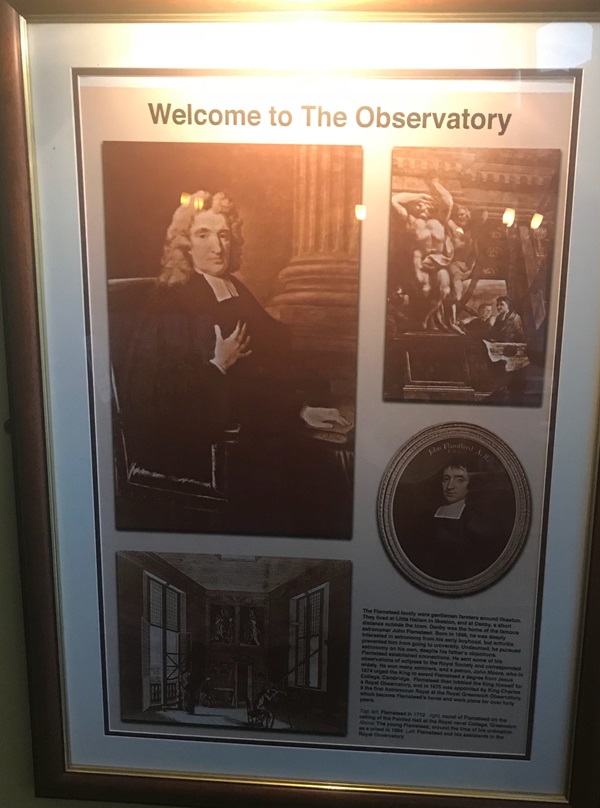
The text reads: The Flamsteed family were gentlemen farmers around Ilkeston. They lived at Little Hailam in Ilkeston, and at Denby, a short distance outside the town. Denby was the home of the famous astronomer John Flamsteed. Born in 1646, he was deeply interested in astronomy from his early boyhood, but arthritis prevented him from going to university. Undaunted, he pursued astronomy on his own, despite his father’s objections. Flamsteed established connections. He sent some of his observations of eclipses to the Royal Society and corresponded widely. He won many admirers, and a patron, John Moore, who in 1674 urged the King to award Flamsteed a degree from Jesus College, Cambridge. Flamsteed then lobbied the King himself for a Royal Observatory, and in 1675 was appointed by King Charles II the first Astronomer Royal at the Royal Greenwich Observatory, which became Flamsteed’s home and work place for over forty years.
Prints and text about the history of Ilkeston.
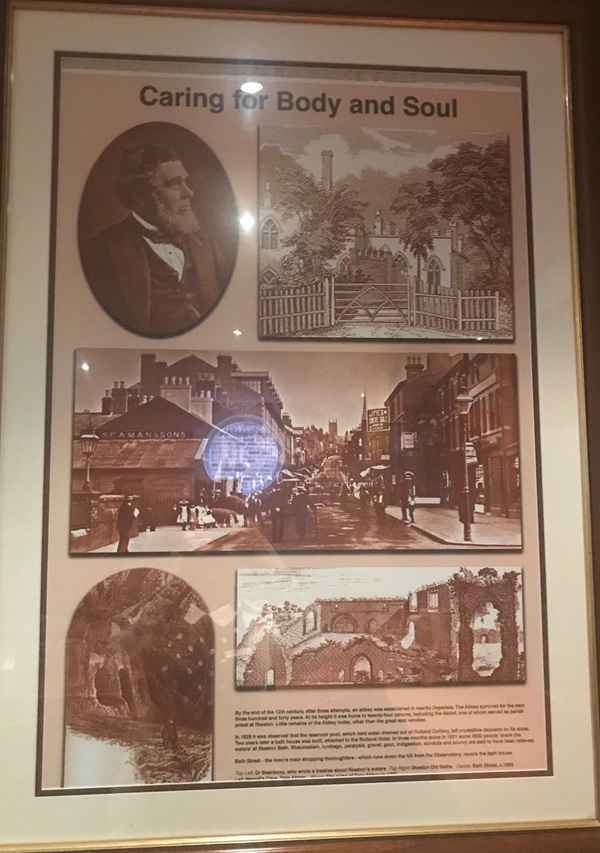
The text reads: By the end of the 12th century, after three attempts, an abbey was established in nearby Depedale. The Abbey survived for the next three hundred and forty years. At its height it was home to twenty-four canons, including the Abbot, one of whom served as parish priest at Ilkeston. Little remains of the Abbey today, other than the great east window.
In 1829 it was observed that the reservoir pool, which held water drained out of Rutland Colliery, left crystalline deposits on its sides. Two years later a bath house was built, attached to the Rutland Hotel. In here months alone in 1831 some 2000 people `drank the waters’ at Ilkeston Bath. Rheumatism, lumbago, paralysis, gravel, gout, indigestion, scrofula and scurvy are said to have been relieved.
Bath Street - the town’s main shopping thoroughfare – which runs down the hill from the Observatory, recalls the bath house.
Prints and text about William Lee.
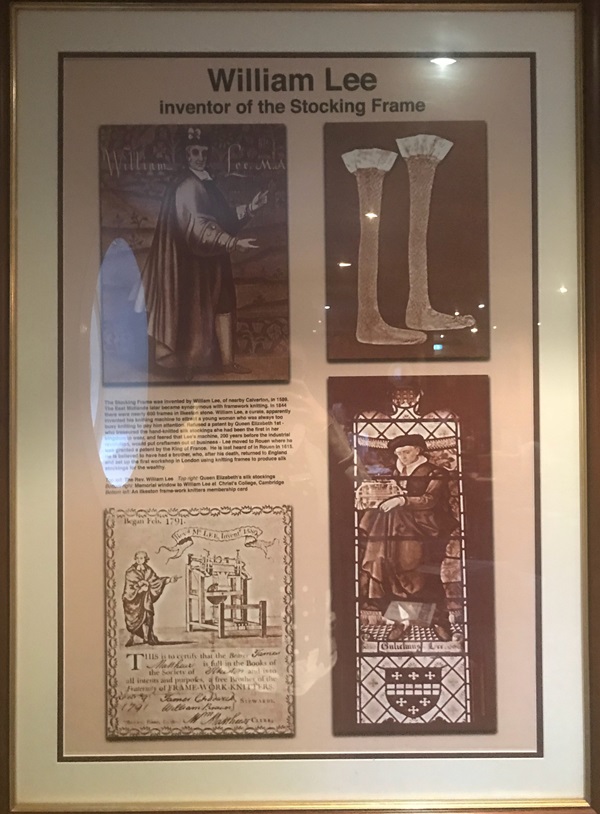
The text reads: The Stocking Frame was invented by William Lee, of nearby Calverton, in 1589. The East Midlands later became synonymous with framework knitting. In 1844 there were nearly 600 frames in Ilkeston alone. William Lee, a curate, apparently invented his knitting machine to attract a young woman who was always too busy knitting to pay him attention. Refused a patent by Queen Elizabeth 1st – who treasured the hand -knitted silk stockings she had been the first in her kingdom to wear, and feared that Lee’s machine, 200 years before the industrial revolution, would put craftsmen out of business – Lee moved to Rouen where he was granted a patent by the King of France. He is last heard of in Rouen in 1615. He is believed to have had a brother, who, after his death, returned to England and set up the first workshop in London using knitting frames to produce silk stockings for the wealthy.
Prints and text about Sir Barnes Wallis.
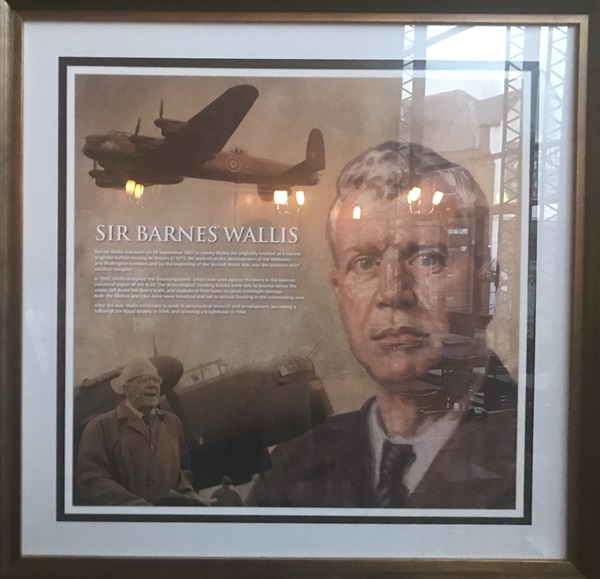
The text reads: Barnes Wallis was born on 26 September 1887 in nearby Ripley. He originally worked as a marine engineer before moving to Vickers in 1913. He worked on the development of the Wellesley and Wellington bombers and by the beginning of the Second World War, was the assistant chief aviation designer.
In 1943, Wallis designed the ‘bouncing bomb’ which was used against the dams in the German industrial region of the Ruhr. The drum-shaped, rotating bombs were able to bounce across the water, roll down the dam’s walls, and explode at their bases to cause maximum damage. Both the Mohne and Eder dams were breached and led to serious flooding in the surrounding area.
After the war, Wallis continued to work in aeronautical research and development, becoming a fellow of the Royal Society in 1954, and receiving a knighthood in 1968.
Old photographs of Ilkeston.
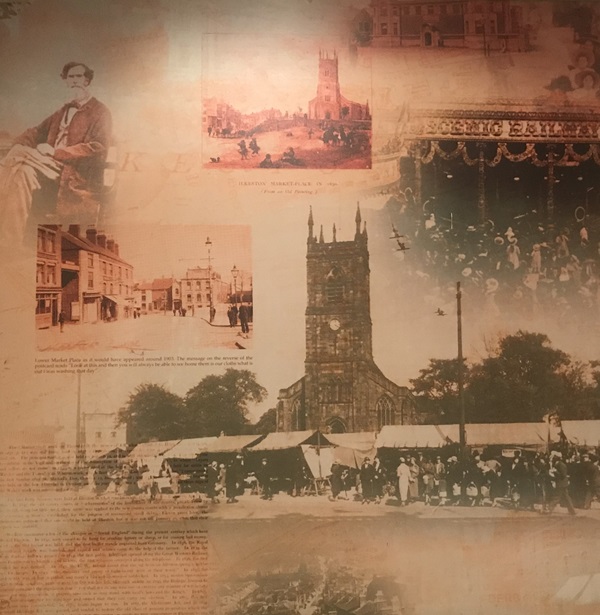
If you have information on the history of this pub, then we’d like you to share it with us. Please e-mail all information to: pubhistories@jdwetherspoon.co.uk